Vega 64 2021 + X58 ReviewKana's FineWine Edition


Introduction
Since I have not been able to get my hands on a RTX 3000 or Radeon 6000 series GPU I have decided to write another article on the RX Vega 64. This article will be a bit different than my previous article from last year. The first difference being that I have finally decided to try out the “YouTube Review Thing”, as I call it. So this article will be accompanied with my “YouTube Review” video for the RX Vega 64. The second is that I am covering several titles that I didn’t benchmark in the previous article along with a few more hardware related twists. I have overclocked my old and trusty Intel X58 to 4.6Ghz with tighter DDR-1600Mhz RAM timings; the previous article ran 4Ghz with normal DDR3-1600 RAM timings (9-9-9-24). I have also overclocked the Vega 64 “HBM” (VRAM Memory Timings) to 1100Mhz, up from 945Mhz, which was very easy to accomplish and should give a few more percentages and performance. The 3 year old RX Vega 64 pulls a lot of wattage and getting the core clock to lock to a specific clock isn’t the easiest thing to do, due to how AMD developed the Vega architecture, so I am just leaving the core at stock for now. I am also running AMD latest drivers for my Vega 64, Radeon Adrenaline 20.12.1 [December 8th 2020]. Later in this article I speak about the RX Vega 64 price before and after my previous 2020 review.
Hello World!
So as I stated above, I have decided to create a YouTube Review video for my RX Vega 64. Initially I wanted to make my first video review with an RTX 3080 or Radeon 6000 series GPU, but they are hard to find at decent prices. I wrote an article about the current situation that is currently ongoing and shows no signs of slowing down due to scalpers and very limited supplies. Creating my first YouTube video was very different and weird since I’ve never had to record and listen to my voice so many times. A lot goes into these articles and now I get the chance to see exactly how much goes into YouTube videos. If you enjoy this article (or any of my articles) or my YouTube vids please hit the like button and share them. Also feel free to leave comments at the end of this article if you have any feedback you would like to share. Now back to the topic at hand we will move to the benchmarks. There are several major titles that I have had the chance to benchmark and this article should give even more perspective on the Vega 64 + X58 performance in 2021. For more information on the Vega architecture, AMDs brief history against Nvidia and AMDs late GPU market releases please refer to my previous article.
X58 + Radeon RX Vega Specifications
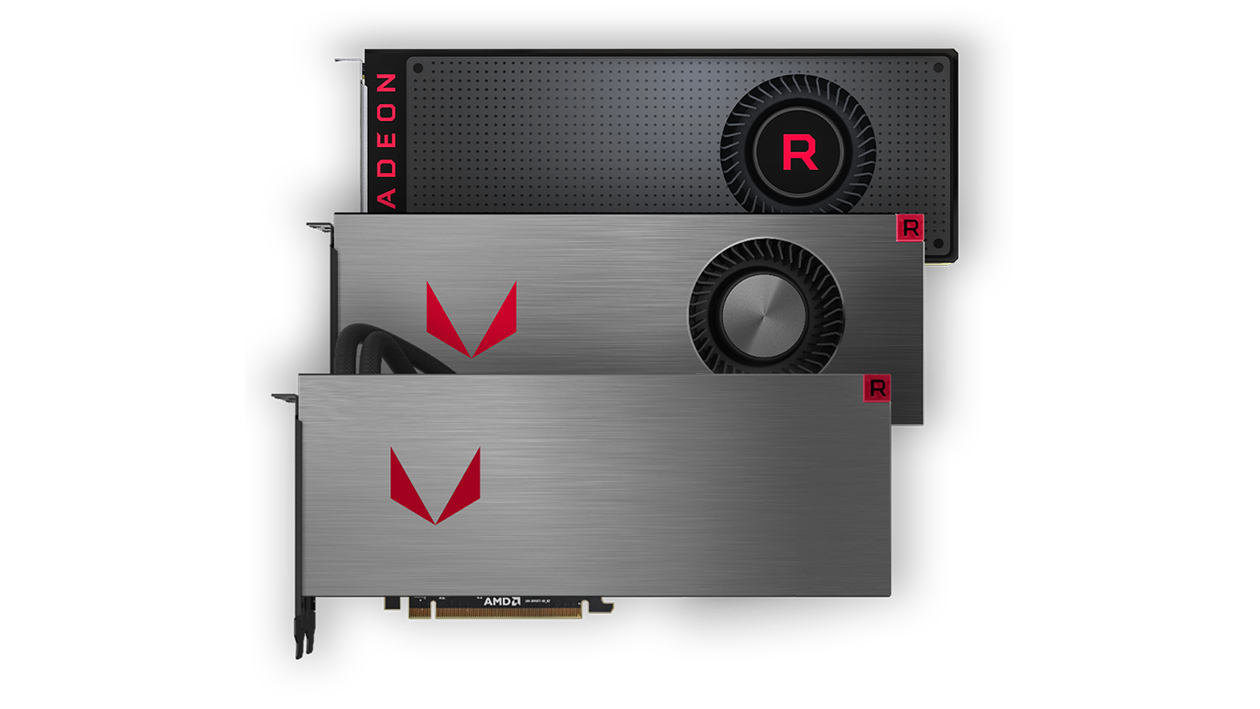
CPU:
Xeon X5660 @ 4.6Ghz
Motherboard: ASUS Sabertooth X58
RAM: 24GB RDIMM DDR3-1600Mhz [6x4GB] - Registered ECC Buffered
PSU: EVGA SuperNOVA G2 1300W 80+ GOLD
SSD NVMe: 3TB - 2.7GB\s Read - 2.1GB\s Write
SSD NVMe: 256GB - 1.4GB\s Read - 600MB\s Write
SSD(x2): 256GB - 550MB\s Read - 500MB\s Write - RAID 0
HDD(x2): 2TB - 330MB Read - 320MB\s Write - RAID 0
HDD(x2): 2TB - 330MB Read - 320MB\s Write - RAID 0
GPU:
AMD Radeon RX Vega 64 Liquid Cooled - Push
GPU Speed:
(Stock) –
Core: 1406Mhz (1677Mhz Boost) -
HBM: 1100Mhz (OC)
GPU Drivers: Radeon "Adrenalin" 20.12.1 [Dec. 8th, 2020]
As you can see above not much has changed, but there are a few key differences. My X5660 has been overclocked from 4.0Ghz in the previous Vega 64 2020 article to 4.6Ghz in this current Vega 64 2021 article. I have also tightened my RAM timings as well. The RX Vega 64 GPU Core clock is still running stock clocks, but the HBM has been overclocked to 1100Mhz (up from 945Mhz in the previous article). Overclocking the Vega 64 GPU core would have pulled far too many watts anyways and the performance is already as good as the 5700XT and 2070 SUPER in several games I tested in the previous article. I have also upgraded the Radeon “Adrenalin” GPU drivers to 20.12.1. We will now look at several games I didn’t have a chance to benchmark as well as a few re-test comparing the newer overclocks and drivers against my previous results from my Vega 64 2020 article. For those who don’t know by now I have been using my legacy X58 tech for nearly 13 years and it only supports PCIe 2.0 with x16 lanes. This means that it can theoretically push 16GB\s of data per second across the bus. That’s a lot of data and over the past 12 years I have been confident that it’s going to be awhile before the PCIe lanes are completely saturated, so far so good. Back in 2013 I started a "X58 Revival" as I call it and many enthusiast got a chance to see how well the X58 platform performed against Sandy-Bridge-E & Ivy-Bridge-E. However, now with Nvidia’s RTX 3000 series and AMD’s 6000 series, we will see how well PCIe 2.0 handles those beastly GPUs. In the meantime I’ll be benching my RX Vega 64 until I can get my hands on one.
Real Time Benchmarks™
Real Time Benchmarks™ is something I came up with to differentiate my actual "in-game" benchmarks from the "built-"in" or "internal" standalone benchmarks tools that games offer. Sometimes in-game - Internal benchmark tools doesn't provide enough information. I gather data and I use 4 different methods to ensure the frame rates are correct for comparison. This way of benchmarking takes a while, but it is worth it in the end. This is the least I can do for the gaming community and users who are wondering if the Radeon RX Vega 64 and X58 can still play newly released titles in 2021. I have been performing Real-Time Benchmarks™ for about 7 years now and I plan to continue providing additional data instead of depending solely on the Internal Benchmark Tools or sythetic benchmarks apps.
-What is FPS Min Caliber?-
You’ll notice something named “FPS Min Caliber”. Basically FPS Min Caliber is something I came up to differentiate between FPS absolute minimum which could simply be a point during gameplay when data is loading, saving, uploading, DRM etc. The FPS Min Caliber™ is basically my way of letting you know lowest FPS average you can expect to see during gameplay. The minimum fps [FPS min] can be very misleading. FPS min is what you'll encounter only 0.1% during your playtime and most times you won’t even notice it. Obviously the average FPS and Frame Time is what you'll encounter 99% of your playtime.
-What is FPS Max Caliber?-
FPS Max Caliber uses the same type of thinking when explaining the MAX FPS. Instead of focusing on the highest max frame that you'll only see 0.1% of the time, I have included the FPS max Caliber you can expect to see during actual gameplay. With that being said I will still include both the Minimum FPS and the Max FPS. Pay attention to the charts since some will list 0.1% (usually for synthetic benchmarks), but normally I use 1% lows for nearly all of my benchmarks. In the past I used the 97th percentile results, but now I just use the 1% most of the time. I just thought I would let you enthusiast know what to expect while reading my benchmark numbers.
Sythetic Benchmark3DMark - FireStrike

I have decided to revisit Fire Strike with my 4.6Ghz CPU OC and 1100Mhz HBM OC on the RX Vega 64. I am comparing the results from my previous article to my current setup. 1080p shows very nice improvements ranging from 7% to 21%. The biggest increase is the Combined Graphics Test (+21%) which is great news for 1080p in actual gaming titles and possibly 1440p since the CPU will be able to pump out more data. In FireStrike there are minor FPS increases at 1440p and 4K as far as frames per second goes, but an increase is good nonetheless. Later in this article I also re-visit Shadow of the Tomb Raider to compare my latest overclock to my previous article results.

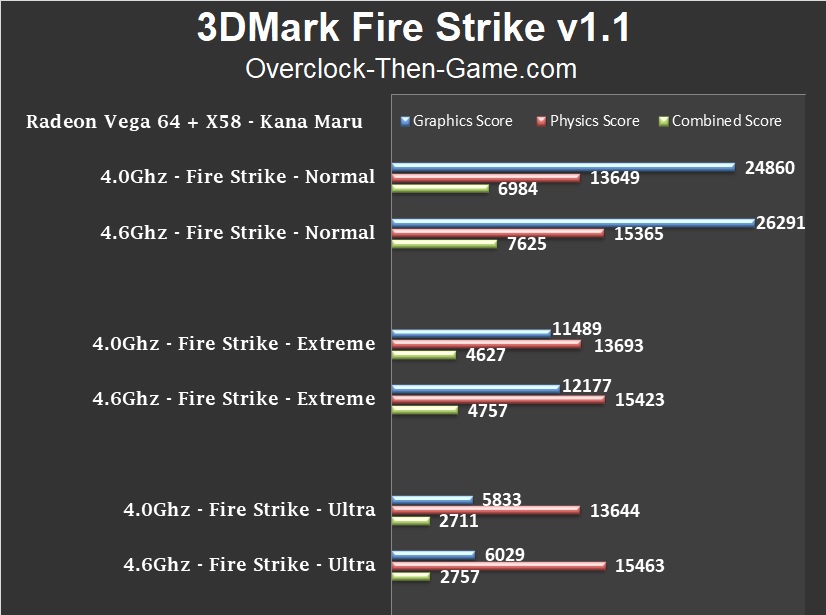
Doom Eternal
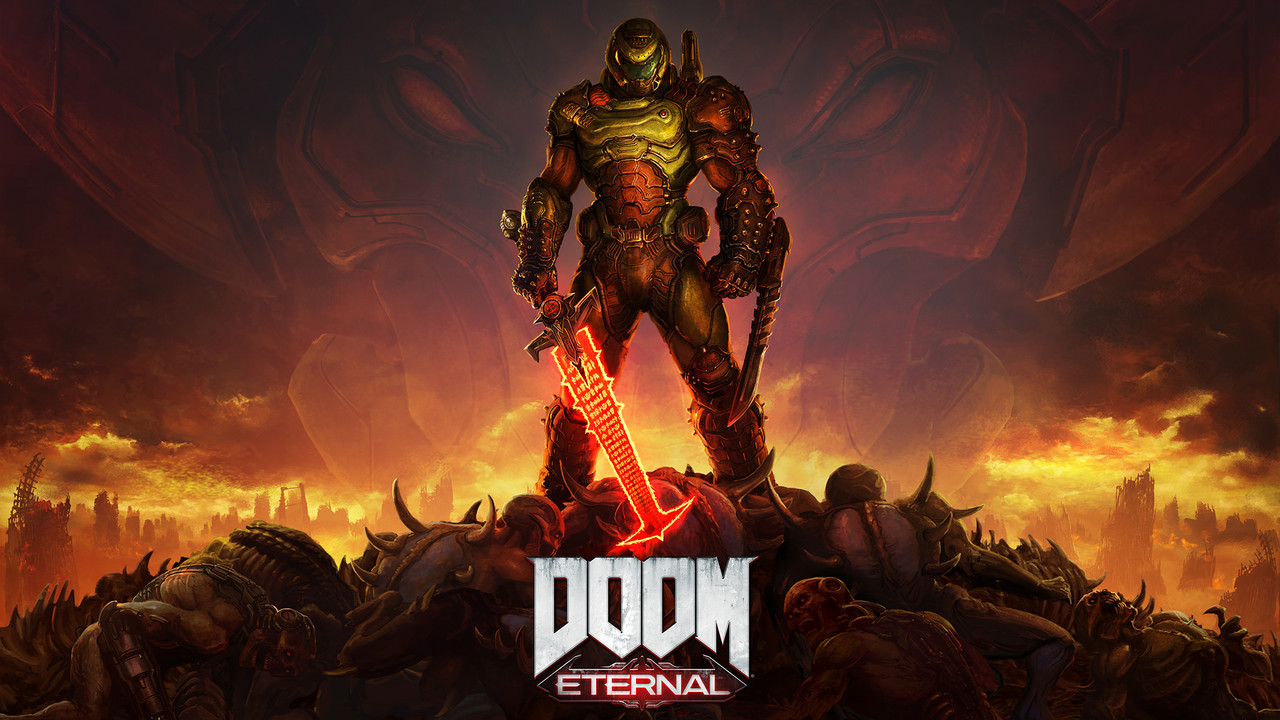
Let’s start the Vega 64 + X58 2021 benchmarks off with a title using the Vulkan API that is well programmed, Doom Eternal. This sequel is the follow up the 2016 Doom release. Graphically the game is stunning, the music tracks are very nice and the enemies are still deadly as ever. I disabled Motion Blur because….why not? Motion Blur with fast paced games is never a good combo; actually Motion Blur is normally overdone and almost never truly needed in most games I play. As you can see the RX Vega 64 along with the X58 has no problem pumping out tons of frames at all resolutions using Ultra Nightmare Settings. I have included a YouTube video below showing my X58+Vega 64 running Doom Eternal with Ultra Nightmare graphical settings below.
Real Time Benchmarks™

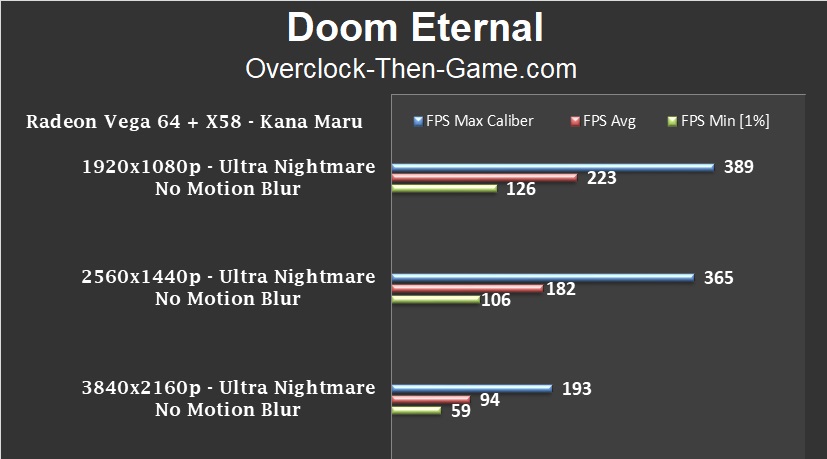
X58 + Vega 64 4K - Doom Eternal Gameplay
X58 + Vega 64 1080p - Doom Eternal Gameplay
Cyberpunk 2077

Cyberpunk 2077 is also one of the biggest games that released a few weeks ago and there was a ton of controversy. The game was extremely buggy causing a backlash and an avalanche of refunds to be submitted. A few patches have been released and the game no longer crashes on my system. The performance wasn’t what I thought it should be with a RX Vega 64, granted that Vega is a three year old architecture I thought it could at least put up a decent fight. The GPU should be much more capable from what I experienced in my opinion. 1080p ran “fairly” well with Ultra settings. Fairly as in you’ll be near 60fps, but might encounter a few performance hiccups every now and again. 1440p is playable, but there is noticeable micro stutter and frame issues. 4K is not playable and the performance is horrible. Even with low settings at 4K I was only pull about 37 frames on average, but that is less than 1440p with Ultra settings. Not that 1440p Ultra is that much better. 4K used about 7.4GB vRAM during my benchmark attempts. This game definitely needs more patches and appears to be CPU heavy. The RX Vega 64 didn’t appear to be struggling as it had no issues in the GPU load area. We knew that this game would be a DirectX12 exclusive, but once again, it would be nice if more games had more than DirectX to use. Vulkan with Async Compute would have been a great alternative and could probably alleviate a lot of the performance bottlenecks when utilized properly. DirectX12 has proven to be capable when games are programmed properly and take advantage of Async Compute. Hopefully more patches are released so that gamers can enjoy higher resolutions with capable GPUs.
Real Time Benchmarks™

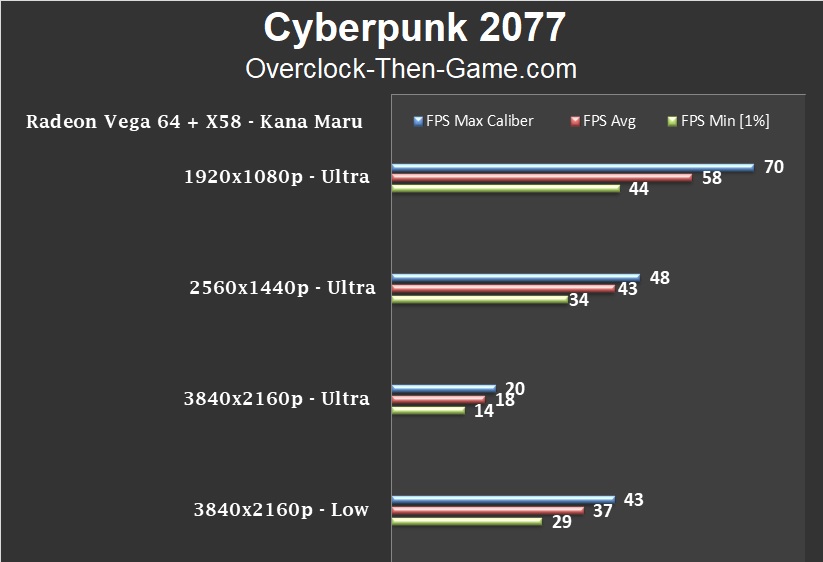
Horizon Zero Dawn
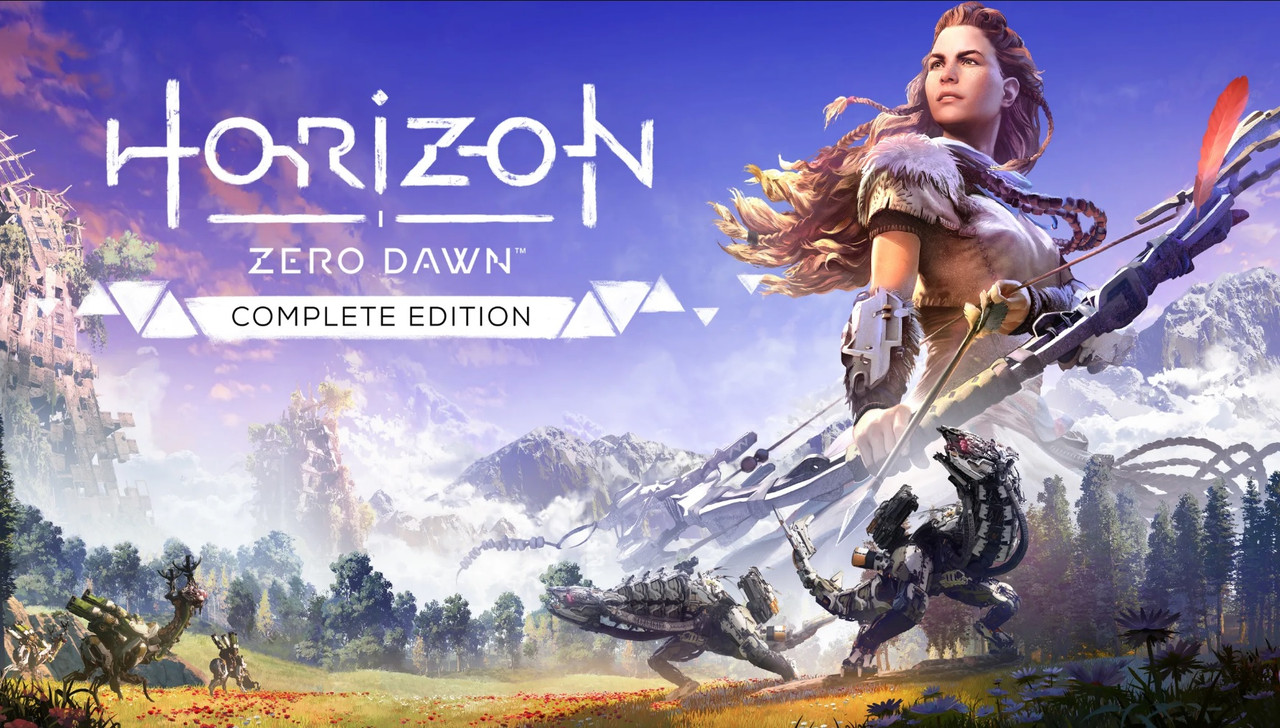
One of the biggest games released last gen on the PlayStation 4 finally made its way to PC a few months ago. This title runs very well with Ultimate Settings, even at 4K. During my 4K gameplay bnechmarks I averaged 35fps, but it is a very stable and very playable 35fps. I have included a YouTube video below showing Horizon Zero Dawn 4K gameplay on my X58 + RX Vega 64 using the Ultimate Graphical settings.
Real Time Benchmarks™

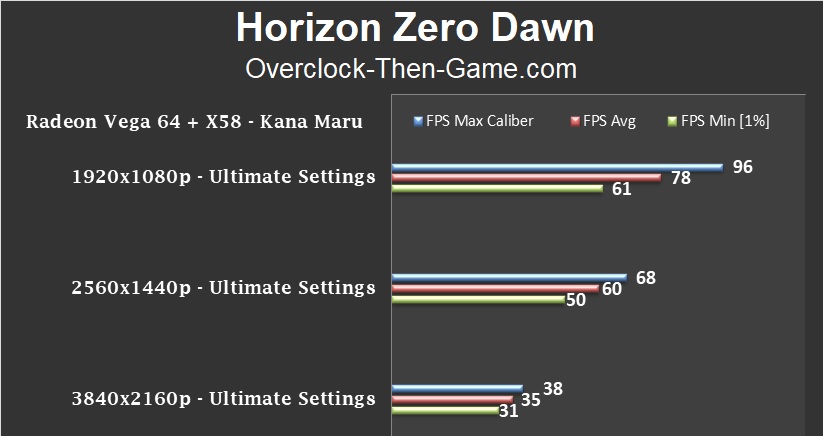
X58 + Vega 64 4K - Horizon Zero Dawn Gameplay
Metro Exodus
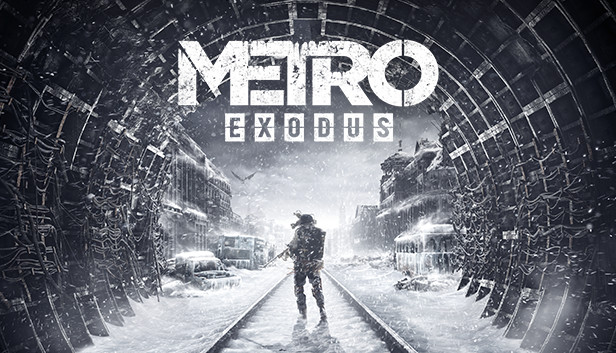
This game also runs very well as expected based on previous Metro titles. Nvidia Gameworks Tech was disabled as usual when I am running AMD GPUs. Using the “Extreme” Graphical Settings at 4K also runs very well with stable framtimes. Using “Ultra” Settings at 4K allowed me to gain 9 frames average as well as better minimum frames. 1440p seems to be the sweet spot as usual.
Real Time Benchmarks™

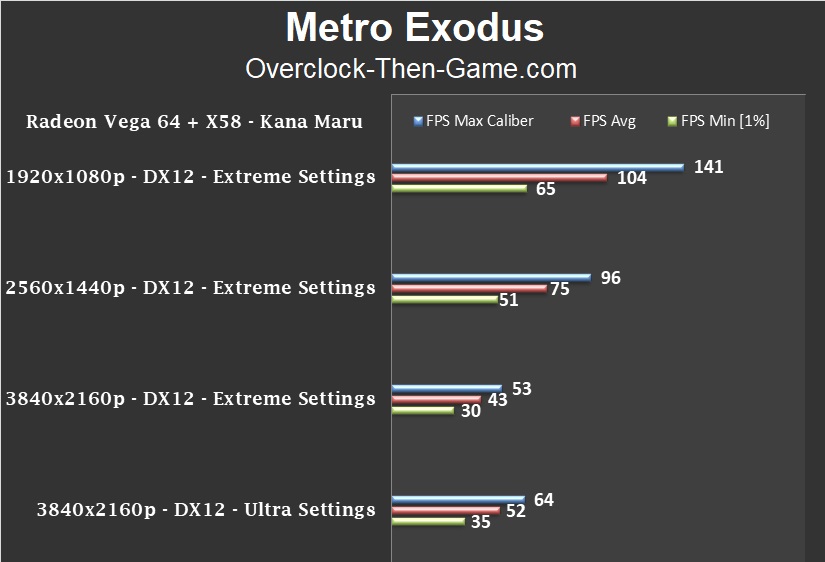
Shadow of the Tomb Raider

Real Time Benchmarks™
Shadow of the Tomb Raider was a game that I previously benchmarked in my previous Vega 64 + X58 2020 Review last year. I decided to re-visit this title since I am running my CPU clocked higher (4.0Ghz to 4.6Ghz) along with tighter RAM timings, 1100Mhz on the Vega 64 HBM and the latest AMD Radeon drivers. It is worth noting that the Vega 64 GPU Core clock has not been overclocked and is running stock clocks. The results were more interesting than I was expecting. Shadow of the Tomb Raider supports DirectX12 and Async Compute which AMD GPUs have supported natively for years. My previous results were great in my last Vega 2020, but this time around in 2021 the CPU was able to feed more data to the GPU. At 4K the GPU naturally became more of the bottleneck, but with the HBM overclocked, the CPU overclocked higher and using the latest Radeon drivers, we can see positive results across the board.

Looking at the 2560x1440p results we can see an increase of 18% in the average FPS category. FPS Minimum Caliber (the lowest FPS you can expect to see during gameplay) also increase by 15%. The game ran great before, but the extra performance is nice to see. Moving on the 4K results we see that I have gained an 10% increase in the average FPS area and 5% increase in the FPS Minimum in both areas. FPS Max doesn’t mean much since that’s what you’ll see only 0.1% of the the time. FPS Max Caliber is a better representation of the Max FPS you can expect to experience in most cases. Check the charts above for the results as well as the percentage increases across the board.
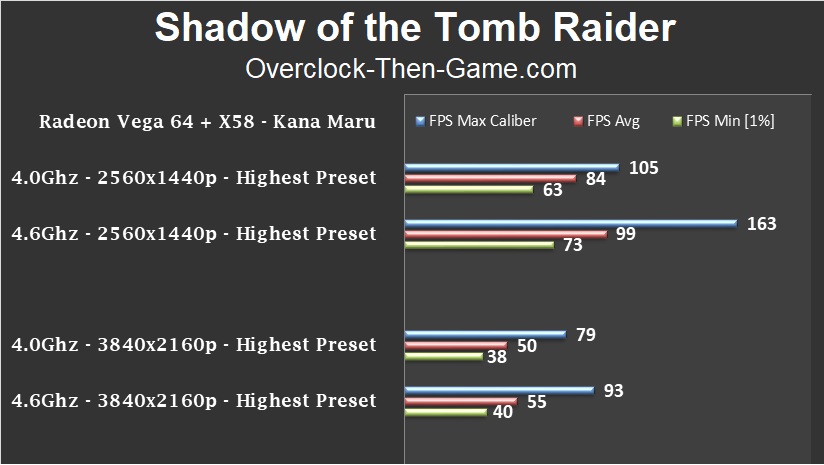
Internal Benchmark Tool
We will now check out the Internal Benchmark numbers using the benchmark tool that is built into the game. I prefer to use actual gameplay as a better mretric for actual performance, but occasionally I will share both results. At 1440p I was able to render 14% more frames while running my CPU at 4.6Ghz instead of 4Ghz. The GPU average FPS was increased by 14% as well. At 4.6Ghz I was able to pump out a nice percentage increase across the board. When running the 4K benchmark I was able to render 14% more frames.
1440p - Internal Benchmark

3840x2560p (4K) - Internal Benchmark


Control

Control supports both DX11 and DX12, but honestly this game could really use Vulkan. Motion Blur was also disabled as usual in during my benchmark runs. As you can see the game performs roughly the same regardless of the API used. DX11 runs slightly better than DX12 in most cases. DX12 barely edges out DX11 in the 1080p\1440p minimum FPS area and that’s pretty much it. DX12 has frame pacing and stutter issues from time to time and DX11 runs much smoother. Even with MSAA Disabled for DX12 at 4K, surprisingly DX11 still runs better with MSAA Enabled. The only other game that has exhibited this type of behavior during my benchmarks was Resident Evil 2 (2019). RE2 DX12 ran worse than DX11 in nearly all cases. During 4K gameplay Control runs rough on both APIs (DX11 and DX12) and you’ll noticed the micro-stutter. Below I have described how to make the game playable at 4K.
Real Time Benchmarks™

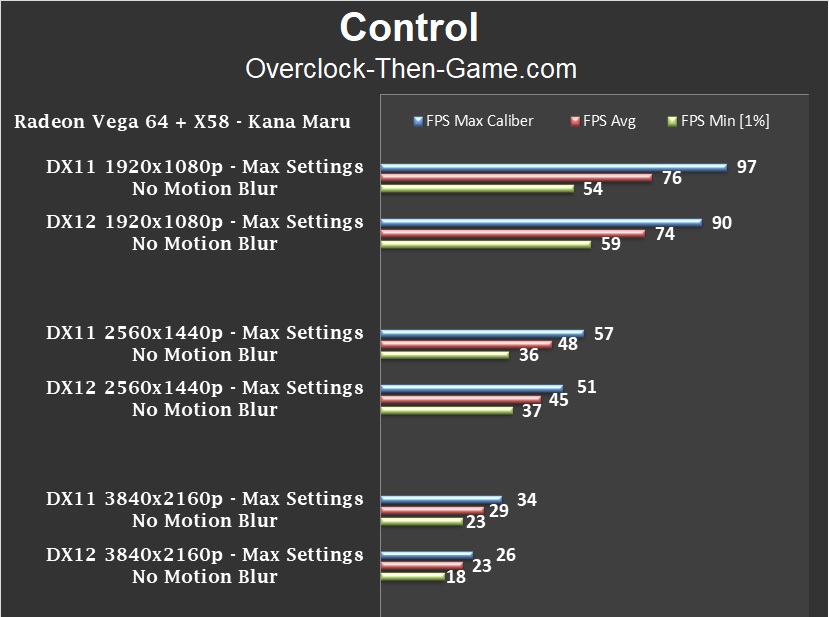
Control - 4K Optimized
Since Control performs badly at 4K on my system I have decided to attempt and show how some gamers can optimize their performance in Control without losing image quality while gaming at 4K. While gaming at 4K you can disable Anti-Aliasing such as MSAA in most cases since AA typically isn’t needed. Personally I also disable Motion Blur as well since it normally kills image quality in my opinion. The micro-stutter and “laggy” gamplay comes from the “Volumetric Lighting”. So moving “Volumetric Lighting” down one setting from “High” to “Medium” will resolve the stutter issues. Next if you lower the “Screen Space Reflections Quality” down one setting from “High” to “Medium” you will gain a few additionally FPS that will make 4K even more playable. The image quality should still look just as great. In DX11 you will see an average FPS increase of 17% and in DX12 you will see an average FPS increase of 56%. The DX12 increase is only due to DX12 performing so horridly in the first place. You can’t go wrong with either API using my optimized settings above, but DX12 performs slightly better in this case. However, I would still stick with the DX11 API based on my experience with this game.

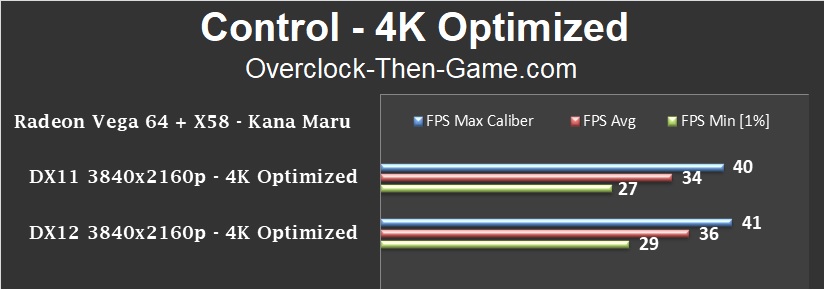
Quantum Break

Real Time Benchmarks™

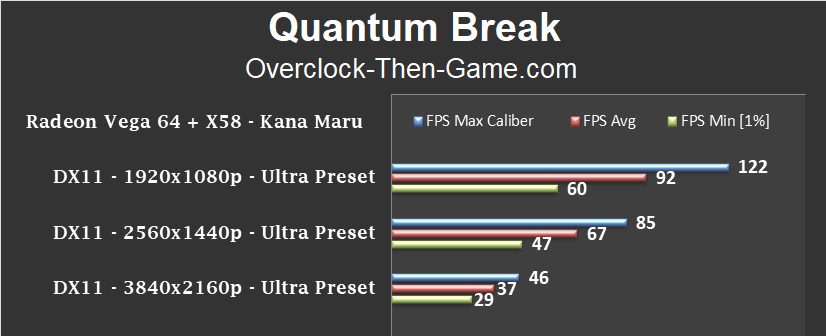
Hellblade: Senua's Sacrifice

This title is a very different type of game and I recommend checking it out if you haven’t by now. It looks great graphically and is definitely unique. All of my benchmark data lines up as it should and this game runs extremely well and stable. This is a title that I really wanted to benchmark in my last review, but I didn’t have the time & never got around to benchmarking it. As you can see the game runs really well. 4K also runs extremely well and stable.
Real Time Benchmarks™


Hunt: Showdown

Hunt: Showdown is also another fairly unique game. The game seems to be rather demanding, but honestly it seems like it could use a few updates and proper support with newer APIs such as DX12 and Vulkan using modern workloads. I used the highest AA (SMAA2TX) for 1080p & 1440p, but only SMAA1X for my 4K benchmark. The game runs using DirectX 11 and this is one of the few games that requires Anti-Aliasing during 4K gaming sessions. That is because without AA or using AA settings below SMAA1X makes the game look terrible in my opinion. 4K also runs very poorly, but I have found a few ways to optimize this game as well.
Real Time Benchmarks™

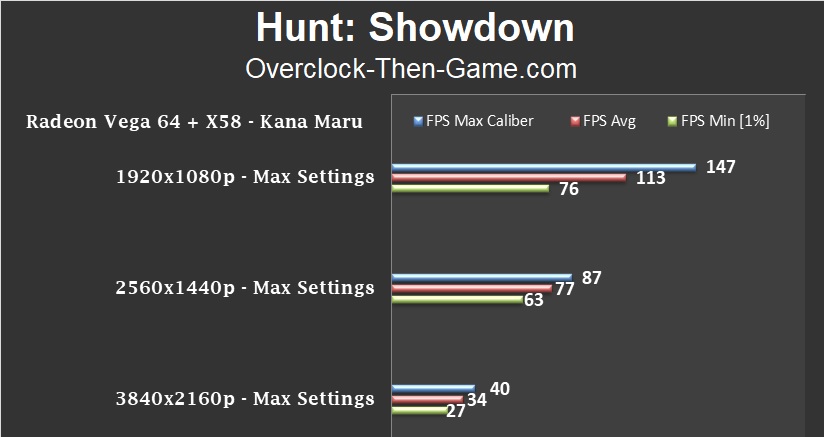
Hunt: Showdow - 4K Optimized
Since this game stutters badly and makes it hard to aim during 4K gaming sessions you can lower a few settings to make the game much more playable without losing image quality. The first thing you’ll want to do is set the Anti-Aliasing to “SMAA 1X”. If you disable AA or use lower settings it will make the game look very bad and “jaggy”. Disable Motion Blur as well since it does nothing for the image quality. Next you will want to locate these two settings: "Lighting Quality" & "Post Process Quality" and move them down one setting from “High” to “Medium”. Just moving these two settings down to the next preset allowed me to gain 24% with average FPS and my minimum FPS increase by 22%. The FPS increases are much needed and the micro-stutter is no longer an issue. As usual you can ignore the Max FPS and focus more on the FPS Max Caliber since that will be the Max FPS you can expect to see during typical gameplay sessions. Also the game runs much smoother overall while looking just as great with all other settings set to their max.
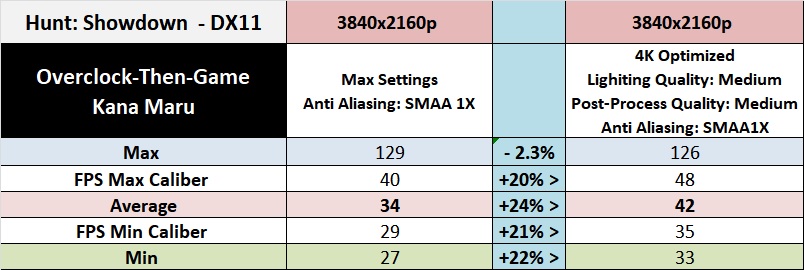

Call of Duty: Warzone

Moving on to one of the hottest games out right now; Call of Duty: Warzone. This title brings out all of the sweaty palm gamers. Since this is more of a e-sports & competitive type of game I decided to simply load up the game at 1080p with the lowest settings possible. I also included the highest 1080p settings as well. The game runs very well on my old 12 year old platform and the RX Vega 64. I didn’t focus on a lot of competitive shooters this time around since my previous articles shows that the Fury X and RX Vega 64 had no issues running those types of titles.
Real Time Benchmarks™


Conclusion
Here we are, roughly six months after my previous RX Vega 64 2020 article and as you can see it still packs a punch in 2021. I’d like focused on the current used prices of the RX Vega 64. The price for a used RX Vega 64 has gone up since my last review. Prior to my Vega 64 2020 review you could easily snag one for around $100-$230, normally around $200, I checked. After I released my review the prices went up to $250-$350+ depending on the model and the cheaper models were purchased quickly.
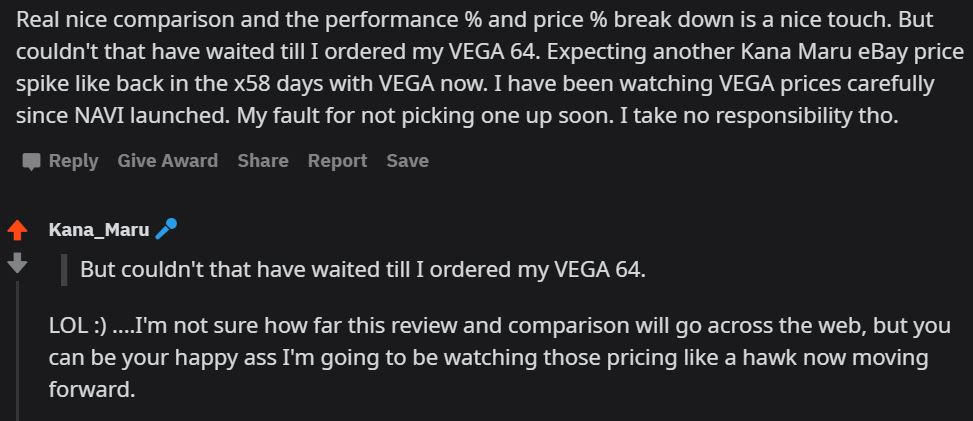
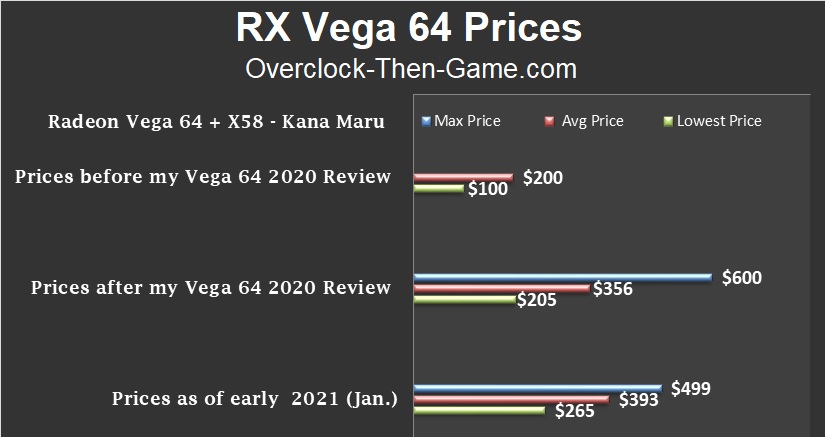
Besides the current used price there really isn’t much to complain about. Right out of the box at stock clocks this card offers nice performance in 2021. I have provided 29 benchmarks for the Vega 64 across two articles to show how well it performs 3 years later. The RX Vega 64 performed well against many games I threw at it with maxed settings. There are many more games that were benchmarked in my previous article as well so be sure to check out those results. Certain games might need some settings tweaked to optimize the 4K experience, but this GPU is a solid 1080p & 1440p card. 4K can also be great depending on the game API code, optimizing graphical settings and ultimately it's up to the gamer requirements. I have no issues playing certain games at 35+ FPS at 4K. Some gamers require 60fps or more. You can check the Power Consumption from my previous article to get an idea of how much wattage was pulled and how to control the Power Consumption effectively.
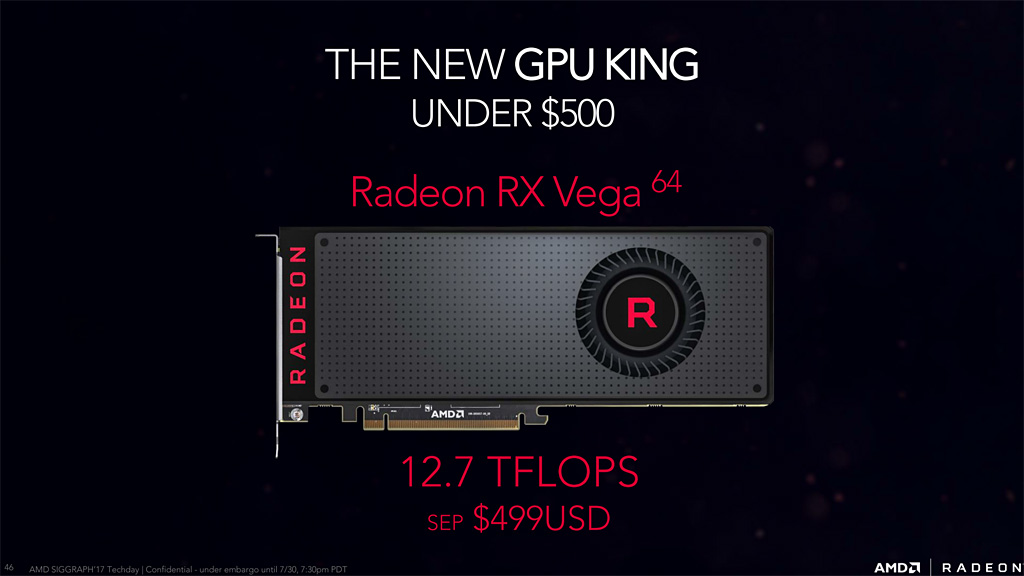
Thank you for reading my Radeon RX Vega 64 2021 Review – Kana’s FineWine Edition Feel free to leave a comment below and feel free to share this article. If you would like to see more content like this please consider donating to Patreon or PayPal by clicking the images below. Thank you.
